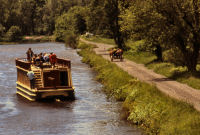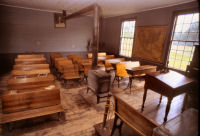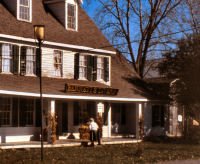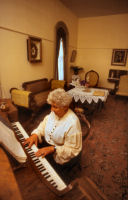A VILLAGE IN TIME

ERIE CANAL VILLAGE, A TOWN BACK IN TIME
It was forty feet wide at ground level, four feet deep, twenty-eight feet wide at the bottom. It was by dint of geographic anomaly, the object of scorn, derision, political opposition, financial wheeling and dealing, and the end result of one man’s vision. In the life-size mural on the wall of the Village Museum in Rome, NY, it looks puny, diminutive, a carefully carved rain ditch.
Nothing in American history changed the county as did the Erie Canal, and it all began right here in Rome, New York.

.
In 1817, newly elected Governor De Witt Clinton secured the money to act on a dream that had stymied earlier generations of explorers--the unheard-of task of linking the Great Lakes with the Atlantic Ocean.


On July 4th 1817, the first shovelful of dirt was turned for what was called by detractors, “Clinton’s Ditch” connecting Rome with Utica, fifteen miles away. It was quite simply, the easiest place to dig. If They could succeed here, they could silence the detractors and generate revenue that would allow them to continue.
“The canal was the leading edge of technology in its day” says Mike Milewski, the Property Manager of Erie Canal Village. “You could say that if there was no Erie Canal, there would be no Statue of Liberty, no Ellis Island, and New York City would not be what it is”.

Rome prospered, becoming an industrial center. The original canal was replaced by the current canal system in the beginning of the 20th century; the old system filled in, built over and forgotten. Some small sections remained as lttle more than water-filled ditches.
In 1966, the city fathers of Rome set aside ninety acres of land for the creation of a 19th century village on the banks of what was left of the original canal. In 1973, it opened. In the ensuing years, twenty-two buildings and homes, many of which were originally built to serve and house canal workers and merchants, were donated and moved here, whole, sectioned, or dismantled completely and re-assembled on site.

The tavern, blacksmith shop, general store, railroad station, church, barn, three period homes, and schoolhouse, among others all came together to form a village that may have existed along the canal, and reflect the effect the canal had on the people who lived along its banks. The schoolhouse came complete with its own records.
“We have records showing the names of children who worked on the canal boats, spending four winter months in our schoolhouse, never to be heard from again,” Mike says, reflecting on the movement of goods and people that the canal created.
Mike’s wife Melody—in her 19th century bonnet and dress--points out the progressive fortunes that the
 canal created, from the 1801 simple Settler’s house, to the 1840 two bedroom Crosby home, to the 1860 cattle dealer’s two story Victorian with its elaborate furnishings that once sat atop a hill overlooking the Mohawk River. “This guy was making money hand over fist,” she says.
canal created, from the 1801 simple Settler’s house, to the 1840 two bedroom Crosby home, to the 1860 cattle dealer’s two story Victorian with its elaborate furnishings that once sat atop a hill overlooking the Mohawk River. “This guy was making money hand over fist,” she says.But most interestingly, it is what is inside of these homes. Aside from the Inn being wired for electricity, all of the buildings are now as they were then, with donations from across the state. Things that were everyday items of everyday life in 19th century America are on display from a time when this area was nothing more than dirt roads and cow-paths.
Today, Western New York State offers some of the finest rural riding and driving areas in the country, rich in the history of 18th and 19th century America.
The present day canal system is a modern, sophisticated waterway, with its poured concrete, computer-controlled locks, transporting thousands of tour and pleasure boats annually. Rome’s Erie Canal Village is a glimpse of how it began.


0 Comments:
Post a Comment
<< Home